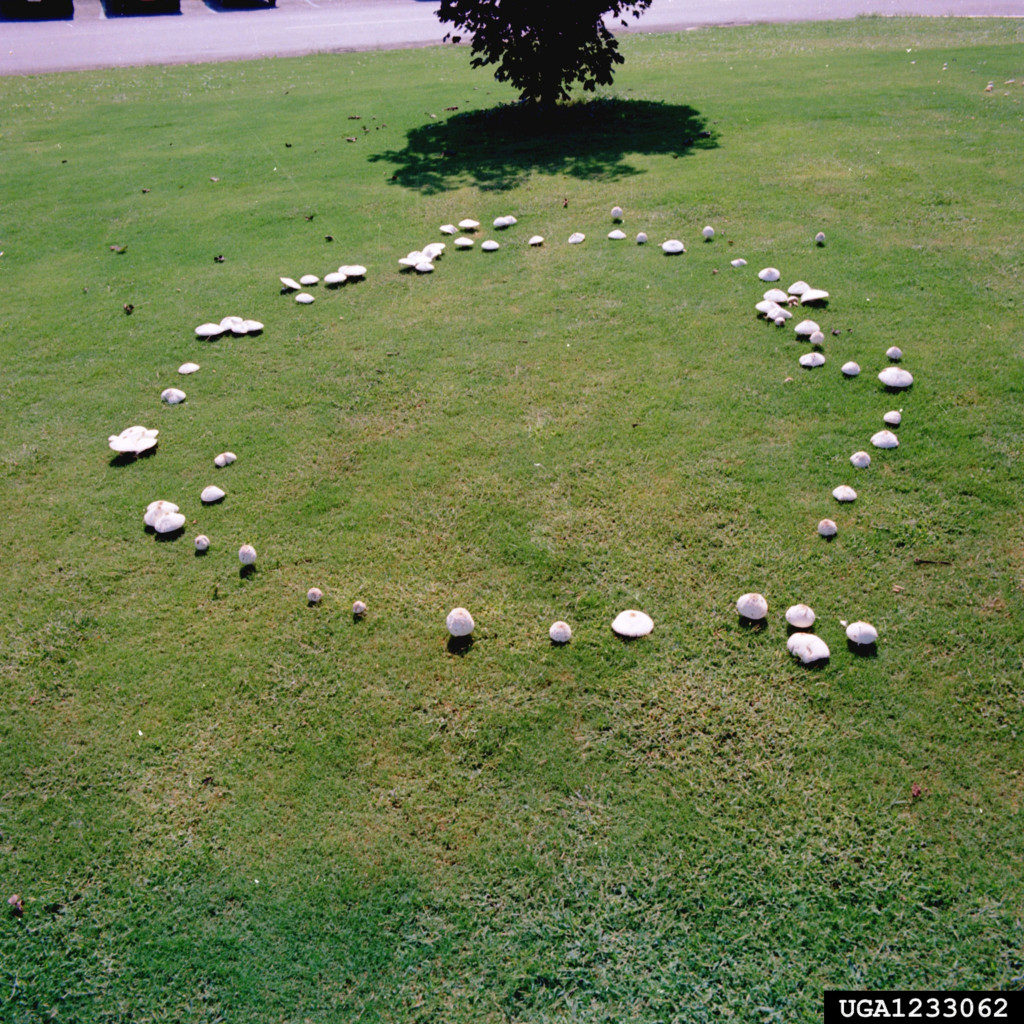We’ve had numerous calls this season about mushrooms popping up in lawns and landscapes. When the “fungus among us” forms a circle or arc pattern, it’s commonly known as a fairy ring. In some cases, fairy ring mushrooms can cause a discoloration or abnormal growth of turfgrass in lawns. According to medieval folklore, they were thought to appear after a band of fairies had danced in a circle!
More than fifty different mushroom species can cause fairy rings. Fairy ring mushrooms are decomposers that grow in soil with high levels of organic matter and in areas where trees were recently removed. Old tree stumps, logs, and roots that are buried in the soil begin to decay and are colonized by various mushrooms.

Growth of fairy ring fungi begin in the center of a ring (e.g. near a tree stump) and expand outward in a uniform, circular pattern over time. Mushrooms might only be visible during periods of wet weather, particularly in the fall.
Fairy rings can grow as large as fifteen feet in diameter and cause the grass to have a different color or texture than the grass outside the ring. Half arcs or semi-circle ring patterns can also occur. Depending on the conditions, grass with fairy rings can be denser, greener, and faster growing, or browner and drier than the surrounding grass.
The good news is that fairy ring mushrooms do not typically cause the grass to die in home lawns. These mushrooms are mainly viewed as a nuisance and will often disappear as weather conditions change. Waiting for them to disappear naturally is usually the best approach. However, they may reappear during the next rainy season or return for many years, depending on how much wood or organic debris is buried in the soil.
If you want to try to manage fairy ring mushrooms, spraying a fungicide is typically not effective. Consider routine core aeration of your lawn, which can improve drainage and reduce thatch buildup that harbor fungi. Fall is an excellent time to aerate tall fescue lawns.
In some cases, fairy rings cause the lawn to form a dense, green ring of grass due to the decay of organic matter. In this situation, adding nitrogen to the surrounding lawn can help green up your grass and mask symptoms of the problem.
Mushrooms can be concerning if you have small children or pets that might accidentally eat them. Discourage children and pets from eating mushrooms as they may be poisonous. I taught my son at a young age that mushrooms are fun and interesting to look at, but we should never touch or eat them unless they come from a grocery store.
The majority of mushrooms might not be lethal, but could cause severe gastrointestinal distress. If mushrooms are problematic, consider raking or hand removing the mushrooms with gloves and disposing in the garbage.
For more information, see UGA Extension publication “Turfgrass Diseases in Georgia: Identification and Control” available on our website.
###
Paul Pugliese is the Extension Coordinator and Agricultural & Natural Resources Agent for Bartow County Cooperative Extension, a partnership of The University of Georgia, The U.S. Department of Agriculture, and Bartow County. For more information and free farm, lawn, or garden publications, call (770) 387-5142 or visit our local website at ugaextension.org/bartow.
